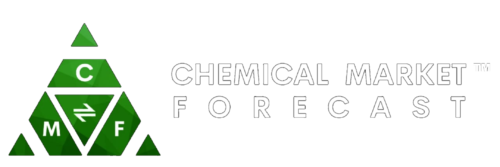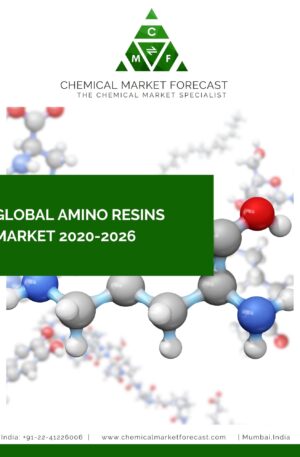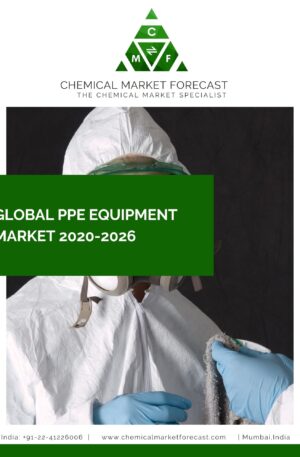Global Electroactive Polymer Market
Electroactive polymers or EAPs are typically polymers that exhibit a change in size or shape on stimulation by an energy input (electric, magnetic, thermal, or optic). This technology is commonly used in sensors and actuators. One of the characteristic properties of this material is that it has the ability to undergo deformation on coming in contact with large forces. Most of these actuators are composed of ceramic piezoelectric materials. Piezoelectric materials have the tendency to accumulate charge within certain solid materials in response to an electric field. EAPs can sustain over 300% strain which is much higher as compared to a ceramic actuator.
The value chain for EAPs extends widely to owing to its advanced properties and applications within the diagnostics segment. The product is used as one of the key backbones for building technology due to its tendency to respond to changes within a simulated environment. The types of polymers used for the construction of this device include electro strictive, liquid crystalline polymers, ferroelectric polymers, and dielectric polymers. The increased research and development within this sector to sustain the increased demand has been propelling the growth of this market.
EAPs are also referred to as artificial muscle due to its applications in robotics. The structure aids mobility along the backbone of a polymeric chain. The increased use of biomimetic and counterfeit muscles in complex medical issues portrays growing opportunities for the EAP market. The advent of technologies like polypyrrole provides a huge growing curve for the opportunity within this market. The substance is used for the production of functional body fluids.
EAPs are also employed in the construction of active catheters. This technology is extensively used in the therapeutics sector. They are guided wires that can be used to perform minimally invasive diagnosis and therapy. The technology is also used for the development of tactile displays such as refreshable braille devices. One such device is currently being developed under the Massachusetts Institute of Technology. The idea was conceived during a hackathon.
EAPs have also growing applications within the aerospace and defense sector. The device can be used to construct unmanned vehicular systems across all platforms. EAP’s are broadly classified into two segments-namely, ionic and electric. The Ionic EAPs function through dissociation diffused ions. While electric EAPs are powered through the flow of current. The technology can also be integrated into microelectromechanical systems (MEMS) to produce smart actuators.
Smart fabrics are one of the largest segments associated with this market. It accounts for maximum market share in terms of R&D activities. Countries like the U.S, China, and Japan primarily govern this market owing to the rapid advancement in terms of industrialization within these segments. On a global scale, APAC has the largest market due to the presence of countries like China, South Korea, Japan, and India. Smart fabrics have technology components woven into them that monitors external stimuli. To generate a response, the change in the stimulus is used to translate the data which in turn facilitates data response.
The use of Electrorheological fluid, Ionic polymer-metal composite, and Stimuli-responsive gels as EAPs has led to further technological advancement within this segment. Stimuli-responsive gels portray a volume transition as a response to the generation of an electric field. On the contrary, Electrorheological fluid showcases a change in viscosity of the fluid. Additionally, the ease of availability of raw materials within the APAC region makes it one of the largest hubs for research. The increased infrastructural advancement that facilitates research within this sector promotes the growth associated with this market. Several global companies have been making investments in the APAC market which drives the growth associated with the EAP sector.
EAPs can be developed from both natural as well as synthetic sources. For instance, DARPA developed an EAP though acrylic polymers and silicone in the year 1990. While electret, the first EAP was developed from carnauba wax, rosin, and beeswax. Post cooling the substance was subjected to a DC electrical bias. The extraction of these materials is difficult which acts as a challenge in the manufacturing stage.
Some of the materials employed for their construction are environmentally hazardous. Improper disposal of EAPs can lead to the substance entering the food chain. Therefore, manufacturing companies need to be careful while disposing EAP industrial waste since it does not go through the process of degradation. Therefore, stringent government regulations are imposed on the use of polymers.
SCOPE:
The report, “Global Electroactive Polymers Market 2019-2025” can be used to gain in-depth knowledge about supply chain management and consumer behavior within this sector. The report focuses on studying the changing market trends for this sector. The study period for this report is from 2019-2025, while the forecast period lasts from 2021-2025.
This report is aimed at:
- Studying the drivers, restraints, and challenges of this market and their impacts on the changing market dynamics.
- Understanding the expanding market for EAP and the environmental regulations that restrict its trade.
- The key players of this market and the strategies employed by them have been discussed within this report.
- The value chain analysis for the EAP market has been performed.
- Supply chain management and optimization techniques have been discussed.
- The logistical constraints of this market have been covered.
- PESTLE and SWOT analysis have been used to study the competitiveness within this sector.
- A forecast analysis has been performed up to the year 2028.
- The high growth markets and the opportunities offered by the potential markets have been covered.
Reasons to buy this report
- Key players of this market can use this report to study the market dynamics and their impacts on the changing trends.
- Existing players of this market can use this report to analyze the strategies employed by the key players within this market.
- Potential players of this market can use this report to understand the current market scenario and the opportunities it provides.
- Suppliers can use this report to study the value chain and consumer demand within this market.
- Technical professionals can use this report to study the commercial aspects of this market and the growth margins associated with them.
- Investors can use this report to study the high growth markets.
Who is this report for:
Industry Professionals: Can use this report to analyze the scope for expansion.
Suppliers: Can use this report to study the logistical constraints that restrict the supply chain.
Technology Innovators: Can use this report to study the existing technology and the demand associated with it to scale up manufacturing.
Government bodies: Can use this report to analyze the opportunities provided by this market and its challenges to make smart investments
Financial Institutions: Can use this report to study the market trends and competitive mapping across this sector.
Educational Institutions: Can use this report to gain a perspective of the industry trends and the current market scenario.





